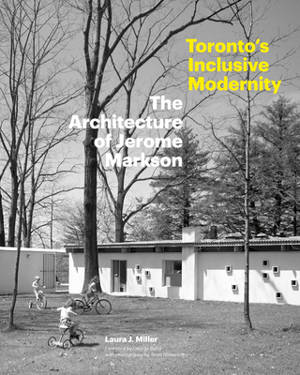
En raison d'une grêve chez bpost, votre commande pourrait être retardée. Vous avez besoin d’un livre rapidement ? Nos magasins vous accueillent à bras ouverts !
- Retrait gratuit dans votre magasin Club
- 7.000.000 titres dans notre catalogue
- Payer en toute sécurité
- Toujours un magasin près de chez vous
En raison de la grêve chez bpost, votre commande pourrait être retardée. Vous avez besoin d’un livre rapidement ? Nos magasins vous accueillent à bras ouverts !
- Retrait gratuit dans votre magasin Club
- 7.000.0000 titres dans notre catalogue
- Payer en toute sécurité
- Toujours un magasin près de chez vous
Toronto's Inclusive Modernity
The Architecture of Jerome Markson
Laura Miller
Livre broché | Anglais
44,95 €
+ 89 points
Description
Jerome Markson's nearly six-decade-long architectural practice began in a time of profound transformation during the post-war period. His buildings were harbingers of important shifts in sociopolitical attitudes, urban policies, and modes of architectural production. From speculative homes in fledgling suburbs, to bespoke private houses, to social housing in downtown Toronto, to luxury landmarks like the Market Square condominiums, as well as important cultural and institutional buildings, his architecture reflects his pursuit of a more open and inclusive expression of modernity, one that moved past late-Modernism's formal legibility in favour of an increasingly idiosyncratic formal, spatial, and material expression. Toronto's Inclusive Modernity: The Architecture of Jerome Markson is the first comprehensive critical assessment of Markson's diverse body of work, interwoven with an account of Toronto's emergence as a cosmopolitan city. Extensive illustrations include wide-format collages by Scott Norsworthy, capturing Markson's buildings in their urban environments today; architectural drawings; and contemporaneous images from the popular press, such as Maclean's and Chatelaine magazines. The significance of Markson's work is examined through three main themes: his prescient use of photography to situate architecture as an inclusive cultural medium and object of human desire; his nuanced responsiveness to Toronto's fast-evolving urban and suburban geographies; and the ways in which his diverse influences--including the Finnish architect Alvar Aalto, Britain's Townscape movement, and his encounters with vernacular architecture--were instrumental in his development of a more pluralistic, materially-oriented approach.
Spécifications
Parties prenantes
- Auteur(s) :
- Editeur:
Contenu
- Nombre de pages :
- 240
- Langue:
- Anglais
Caractéristiques
- EAN:
- 9781773270012
- Date de parution :
- 21-07-20
- Format:
- Livre broché
- Format numérique:
- Trade paperback (VS)
- Dimensions :
- 201 mm x 249 mm
- Poids :
- 1156 g

Les avis
Nous publions uniquement les avis qui respectent les conditions requises. Consultez nos conditions pour les avis.






